Homemade always tastes better! These mochi are incredibly soft compared to the ones I buy at the store. Those ones always feel a bit tough, maybe because they sit for a while. This fresh versionwas the best. Really grateful for this recipe.
White Mochi with Matcha Filling Recipe ( 抹茶大福 )
Recipes > Japanese Recipes > Japanese Dessert Recipes
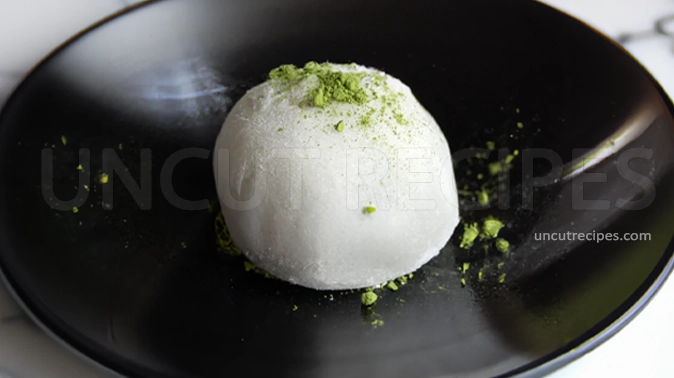
White Mochi with Matcha Filling isn't just another sweet treat; it's a celebration of texture and flavor coming together in a harmonious bite. Mochi, revered for its soft, chewy texture, offers a distinct mouthfeel that's unlike any other dessert. Its delicate outer layer, almost velvety to the touch, hides a surprising core.
Enter matcha, a traditional green tea powder that brings depth with its earthy and slightly bitter undertones. When combined with the creamy shiroan, the matcha is transformed into a velvety, rich filling that contrasts beautifully with the mochi's chewiness. This isn't merely a filling; it's an experience. The sweetness of the shiroan balances the matcha's robust flavor, resulting in a filling that's not too sweet yet deeply satisfying.
Together, the plush mochi and the creamy matcha filling become a dance of flavors and textures. Every bite is a testament to the beauty of contrasting sensations: the initial softness of the mochi, the burst of rich matcha flavor, and the lingering sweetness. It's a culinary journey, short but unforgettable, making this treat a must-try for anyone looking to explore the boundaries of traditional sweets.
JUMP TO:
INGREDIENTS:
Shiroan (White Bean Paste): Store-bought white bean paste can sometimes contain added sweeteners. It's important to taste it before mixing with matcha to ensure the desired sweetness. If it's already too sweet, you might want to add a bit more matcha to balance the flavor.
If you can't find Shiroan, you can substitute with Anko (red bean paste), but this will change the flavor profile of the filling.
Matcha (Green Tea Powder): Always use high-quality culinary grade matcha for a vibrant green color and rich taste. Low-quality matcha might give a dull green color and a bitter taste.
When storing matcha, ensure it's kept in an airtight container in a cool, dark place to prevent it from losing its vibrant color and flavor.
Shiratamako (Glutinous Rice Flour/Sweet Rice Flour): This specific rice flour gives mochi its characteristic chewy texture. If you can't find Shiratamako, you can substitute with Mochiko, which is another type of glutinous rice flour. However, Shiratamako is more refined and usually results in smoother mochi.
MAIN STEPS:
Consistency of White Bean Paste, Smoothness Matters: Ensure the Shiroan has a silky texture before adding matcha. Any lumps or inconsistencies can affect the final mouthfeel of your matcha filling. If the bean paste seems too thick or lumpy, consider passing it through a sieve for a smoother result.
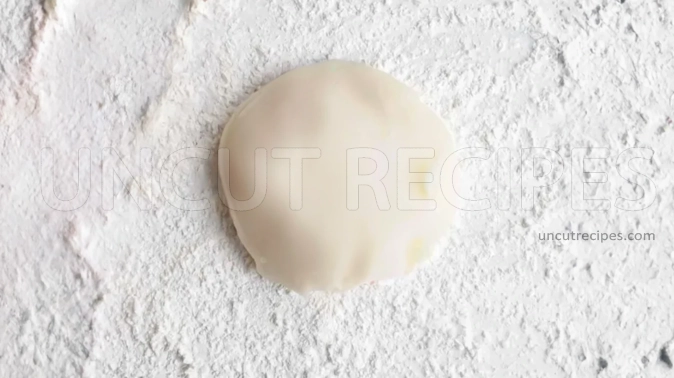
Mochi Handling, The Sticky Situation: Mochi dough is notoriously sticky. The recipe suggests potato starch, but cornstarch can be an alternative to prevent sticking. Ensure your hands, tools, and work surface are amply dusted. When working with mochi, it's also helpful to have a bowl of water nearby. Dipping your fingers in the water can assist in preventing the dough from adhering too much to your skin.
SERVED WITH:
Drink: Gyokuro (Japan): A high-grade shaded green tea that is sweet and umami-rich. This tea complements the matcha flavor of the daifuku without overpowering it, enhancing the matcha experience.
Starter: Matcha Salt Edamame (Japan): Steamed edamame (young soybeans) sprinkled with a mix of salt and matcha powder. This dish retains the familiar flavor of edamame but with a light matcha twist, making it a fitting appetizer before indulging in the Matcha Daifuku.
Main Course: Teriyaki Salmon (Japan): Grilled or pan-fried salmon glazed with a teriyaki sauce made from soy sauce, mirin, and sugar. Its savory-sweet profile balances the sweet and slightly bitter notes of the Matcha Daifuku.
Side Dish: Matcha Soba Noodles (Japan): Buckwheat noodles infused with matcha, typically served chilled with a dipping sauce. The earthy flavors of the soba and matcha blend seamlessly, offering a refreshing and light side option.
Salad: Spinach Salad with Sesame Dressing (Japan): Tender spinach leaves tossed with a creamy roasted sesame dressing. The nuttiness of the sesame complements the matcha flavors of the mochi dessert.
ALTERNATIVES:
Dessert: Daifuku Mochi (Japan): A traditional Japanese sweet, Daifuku Mochi consists of a chewy exterior made of rice flour and a filling typically made of sweetened red bean paste. The contrast between the soft mochi skin and the sweet interior is a treat to the senses.
Dessert: Kashiwa Mochi (Japan): This is a mochi dessert traditionally eaten on Children's Day in Japan. The mochi is filled with sweet red bean paste and is distinctively wrapped in an oak leaf, which is not meant to be eaten but adds a subtle flavor.
Snack: Kinako Mochi (Japan): A delightful mochi treat that's coated in kinako, which is roasted soybean flour. The kinako gives the mochi a nutty, rich flavor which contrasts with the mochi's neutral taste, making it a favorite among many.
Dessert: Matcha Tiramisu' (Italy/Global Fusion): An East-meets-West dessert, Matcha Tiramisu takes the structure of the traditional Italian Tiramisu but replaces the coffee with a matcha-infused mixture. Layers of mascarpone cheese and matcha-soaked ladyfingers create a creamy, bittersweet flavor profile.
Drink: Matcha Latte (Japan): A creamy beverage made by whisking matcha powder with hot water and then adding steamed milk. This drink combines the earthy and slightly bitter flavors of matcha with the creamy richness of milk. It can be enjoyed hot or cold.
Drink: Matcha Smoothie (Japan): A healthful beverage that blends matcha powder with various ingredients like bananas, yogurt, and almond milk. The resulting drink is creamy, smooth, and packed with the unique flavor of matcha along with its health benefits.
HISTORY:
The history of mochi in Japan dates back over a millennium. This glutinous rice cake was initially consumed exclusively by the Imperial family in religious ceremonies and New Year's celebrations. With the passing of time, it became a food enjoyed by the masses, especially during festivals like the annual Mochitsuki, where communities come together to pound rice into mochi.
An integral part of Japanese culture, matcha, or powdered green tea, has its origins in the Tang Dynasty of China. Brought over to Japan in the early Heian period (794-1185) by Buddhist monks, it became an integral part of Japanese tea ceremonies and later found its way into a multitude of Japanese confections.
The fusion of mochi and matcha likely began in teahouses and confectionery shops in Kyoto, a city with a long-standing tradition of tea and sweet-making. As the cultural and political heart of Japan for centuries, Kyoto became the birthplace for many iconic Japanese confections. "Daifuku" translates to "great luck," and these treats are often associated with good fortune. The bitterness of the matcha juxtaposed against the sweet mochi created a balance that was both delicious and symbolized the harmony so central to Japanese aesthetics.
Traditionally, mochi has played a prominent role in various Japanese ceremonies and celebrations, from New Year festivities to religious rituals. The inclusion of matcha, with its ties to Zen Buddhism and the revered tea ceremony, added depth to this tradition, making Matcha Daifuku a treat with both cultural and spiritual significance.
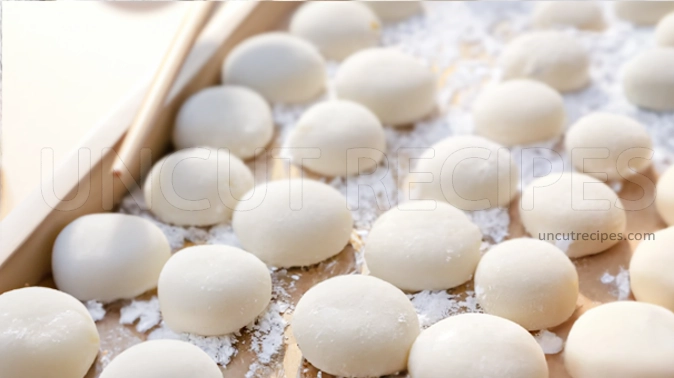
Over time, Matcha Daifuku became a favorite across Japan and is now found in many confectionery shops. Its dual nature as both a treat and a symbol of good fortune and harmony means it's often given as a gift, especially during times of celebration or seasonal transitions.
In contemporary Japan, Matcha Daifuku remains a sought-after treat, embodying centuries of culinary and cultural history. While variations exist, with some artisans experimenting with fillings or mochi flavors, the classic White Mochi with Matcha Filling holds a special place in the hearts of many, a delightful bite that transports one to the ancient streets of Kyoto with every taste.
TIPS:
Texture: The perfect Mochi has a tender yet chewy texture. Over-mixing or overcooking will result in a hard texture. Aim for brief yet efficient mixing and precise cooking times.
Balanced Sweetness: Adjust sugar according to the sweetness of your Shiroan. Different brands and batches might have varying sugar content, which can affect the overall taste.
Flavor Infusion in the Filling: These subtle notes can beautifully complement the Matcha's earthiness and enhance its depth.
Method: Consider adding a tiny drop of pure vanilla or almond extract to the Matcha filling.
Steam, Don't Microwave: Steaming gives a more consistent heat distribution, resulting in an even-textured Mochi.
Method: Instead of microwaving the Mochi dough, steam it over a pot of boiling water in a bamboo or metal steamer lined with parchment paper for about 15 minutes or until translucent.
Recipe Information
Skill Level
|
Time 30 Minutes |
Price
|
Makes 6 to 48 Mochi |
| Healthiness |
Nutritional Information |
| Ratings (Add Rating & Review) |
Reviews 13 Reviews |
Ingredients:
-
1 cup Shiroan
( White Bean Paste )
2 teaspoons Matcha
( Green Tea Powder )
12 tablespoons Shiratamako
( Glutinous Rice Flour / Sweet Rice Flour )
4 tablespoons Sugar
12 tablespoons Water
Allergens
| Gluten |
Directions:
Preparing the Matcha Filling:
01 - In a small mixing bowl, blend together the White Bean Paste (Shiroan) and Matcha Powder until you achieve a smooth, unified texture.
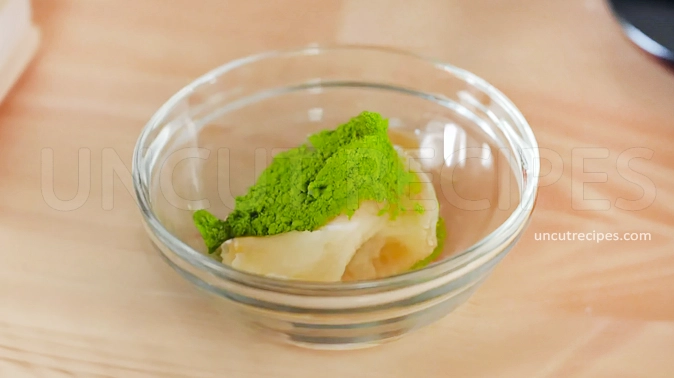
02 - Cover your mixture with plastic wrap and place it in the freezer for 30 minutes. Alternatively, you can chill it in the fridge for an hour to help it set.
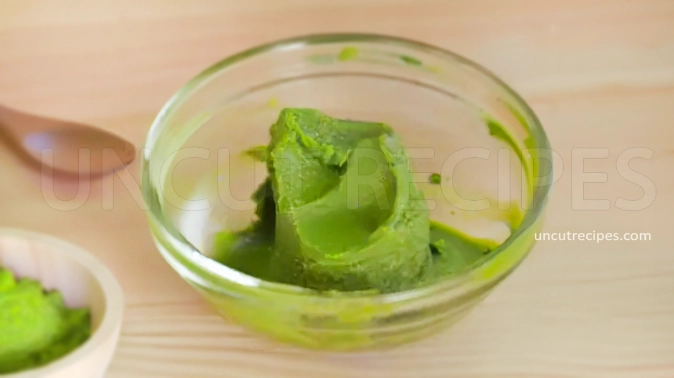
03 - Once the time has passed, remove your mixture from the cooling area.
04 - With damp hands, separate and shape the paste into 6 even balls.
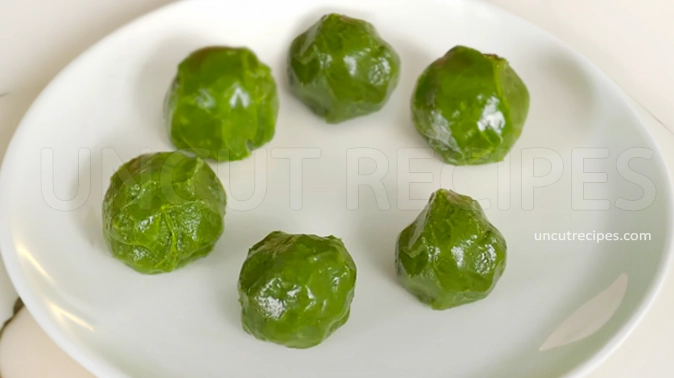
05 - Keep these Matcha Paste Balls in the fridge until you're ready to use them.
Preparing the Mochi Dough:
06 - In a separate bowl, whisk together the Shiratamako and Sugar until well-mixed.
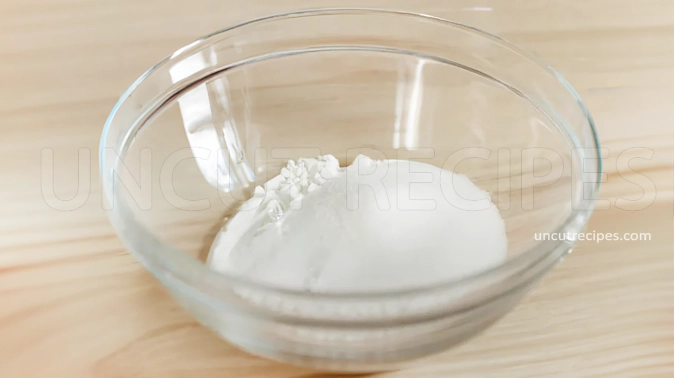
07 - Slowly pour in the Water, continuing to whisk until the mixture is free of lumps.
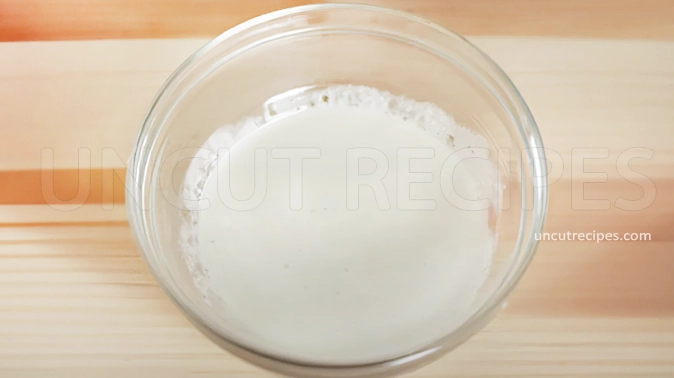
08 - Cover the bowl with a paper towel and microwave on high (1200W) for a minute.
09 - After microwaving, wet a silicone spatula with some water and stir the Mochi mixture thoroughly.
10 - Cover the bowl again with the paper towel and microwave for another 30 seconds. Your Mochi Dough should now appear translucent.
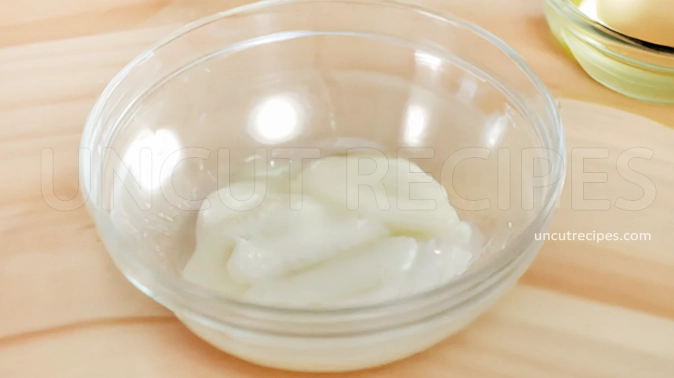
Shaping and Filling the Mochi:
11 - Dust a baking sheet generously with Potato Starch to prevent the Mochi from sticking.
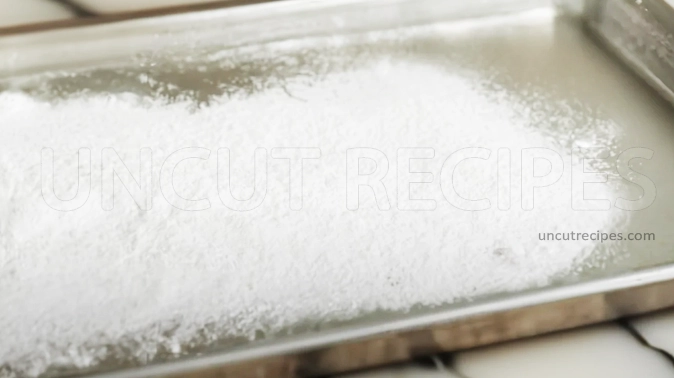
12 - Carefully move the warm Mochi Dough from the bowl onto your prepared baking sheet.
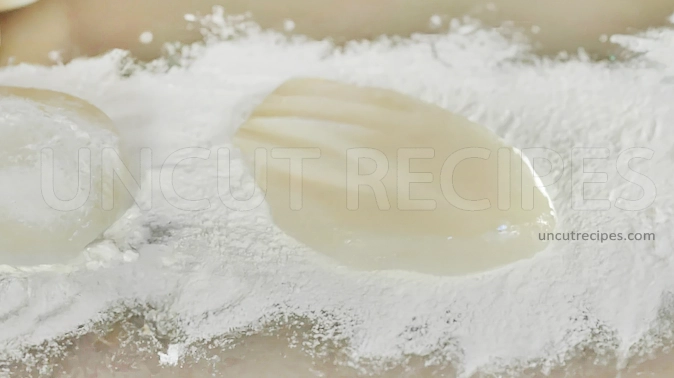
13 - Sprinkle more Potato Starch over the Mochi Dough and rub some on your hands too. Remember, Mochi is very sticky, so the more starch, the better!
14 - Divide your Mochi Dough into equal portions.
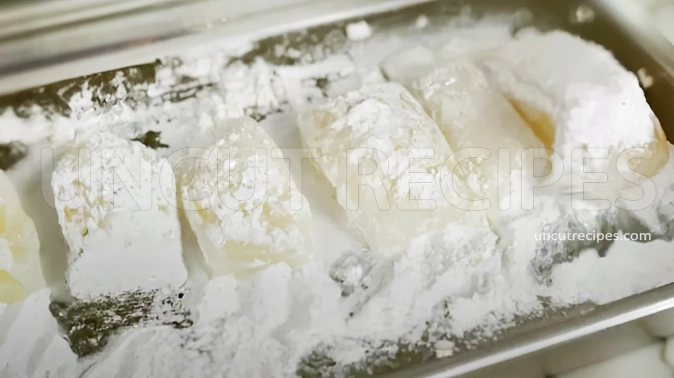
15 - Flatten each portion into small discs.
16 - Place a Matcha Paste Ball in the center of one of the Mochi discs.
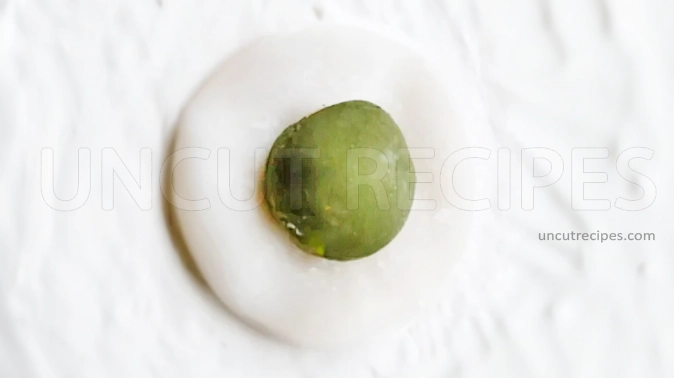
17 - Gently pull and wrap the Mochi over the Matcha Paste Ball, pinching the edges to seal it. Ensure the sealed side is facing downwards.
18 - Repeat the filling and sealing process for the remaining Mochi discs. Once done, let them rest at room temperature before serving. Enjoy!
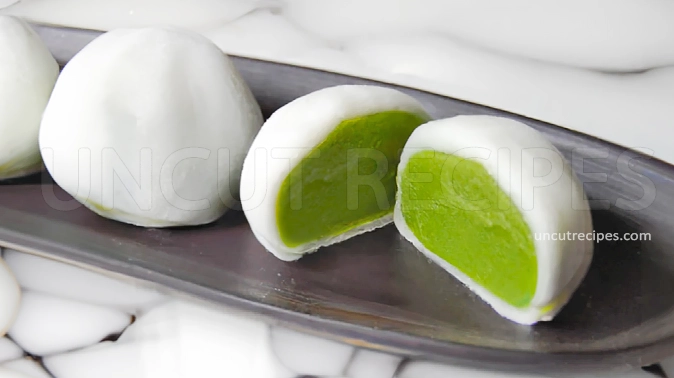
Notes:
Consistent Temperature: Mochi can harden in cold temperatures. If not serving immediately, store in an airtight container at room temperature for up to 2 days. If refrigerated, always bring to room temperature before serving.
Storing: Mochi is best enjoyed fresh, but if you need to store them, keep them in an airtight container at room temperature for up to 24 hours. For longer storage, refrigerate them, but be aware that refrigeration might change the texture of the mochi, making it harder. Before consuming refrigerated mochi, allow it to come to room temperature to regain some of its softness.
Serving: Mochi can be quite sticky. If serving to guests, you might want to provide individual parchment paper or cupcake liners to hold each mochi piece.
Nutritional Information
( Per Portion )
|
Calories |
100 kcal (5%) |
| Total Carbohydrate | 22g (8%) |
| Cholesterol | 0mg (0%) |
|
Total Fat |
0.5g (1%) |
| Saturated Fat | 0.1g (0.5%) |
| Polyunsaturated Fat | 0.2g |
| Monounsaturated Fat | 0.1g |
| Trans Fat | 0g |
| Fibers | 1g (4%) |
| Protein | 2g (4%) |
| Sugar | 10g (40%) |
|
Vitamin A |
50 IU (1%) |
|
Vitamin B1 (Thiamin) |
0.03mg (2%) |
| Vitamin B2 (Riboflavin) | 0.02mg (2%) |
| Vitamin B3 (Niacin) | 0.4mg (2%) |
| Vitamin B5 (Pantothenic Acid) | 0.2mg (4%) |
| Vitamin B6 | 0.02mg (1%) |
| Vitamin B7 (Biotin) | 0.5mcg (2%) |
| Vitamin B9 (Folate) | 5mcg (1%) |
| Vitamin B12 | 0mcg (0%) |
| Vitamin C | 0mg (0%) |
| Vitamin D | 0 IU (0%) |
| Vitamin E | 0.2mg (1%) |
| Vitamin K | 1mcg (1%) |
| Choline | 5mg (1%) |
| Carnitine | 0mg (0%) |
|
Calcium |
10mg (1%) |
|
Chloride |
5mg (02%) |
| Chromium | 0.5mcg (1%) |
| Copper | 0.03mg (3%) |
| Fluoride | 0mcg (0%) |
| Iodine | 0.5mcg (0%) |
| Iron | 0.5mg (3%) |
| Magnesium | 10mg (2.5%) |
| Manganese | 0.1mg (4%) |
| Molybdenum | 0.5mcg (1%) |
| Phosphorus | 15mg (2%) |
| Potassium | 40mg (1%) |
| Selenium | 0.5mcg (1%) |
| Sodium | 5mg (0.2%) |
| Sulfur | 10mg (1%) |
| Zink | 0.2mg (2%) |
* Percent Daily Values are based on a 2,000 calorie diet. Your daily values may be higher or lower depending on your calorie needs.
** Nutrient information is available for all ingredients in this recipe. Amount is based on available nutrient data collected from all over the internet.
(-) Information is not currently available for this nutrient. If you are following a medically restrictive diet, please consult your doctor or registered dietitian before preparing this recipe for personal consumption. |
| Written by: Uncut Recipes | Disclaimer |


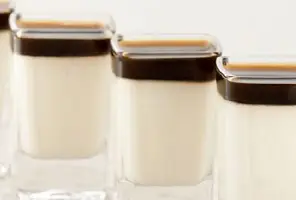

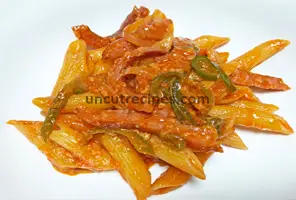
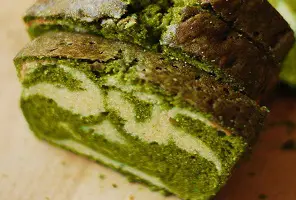
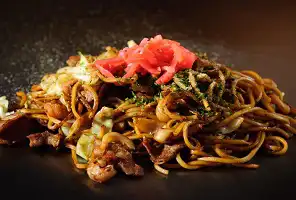



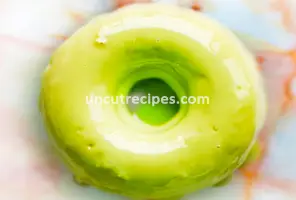

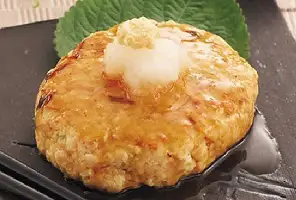

September 27, 2023
Thank you for sharing such an easy-to-follow recipe! These mochi bites were a hit in my house.